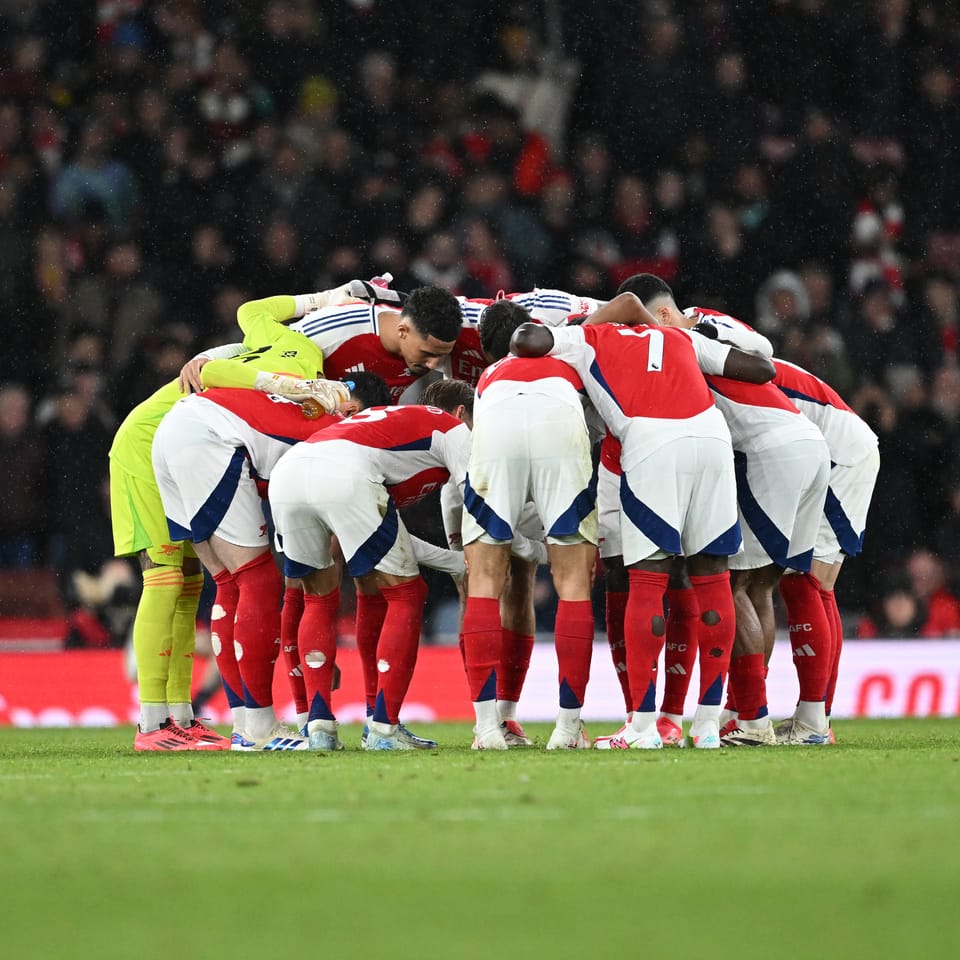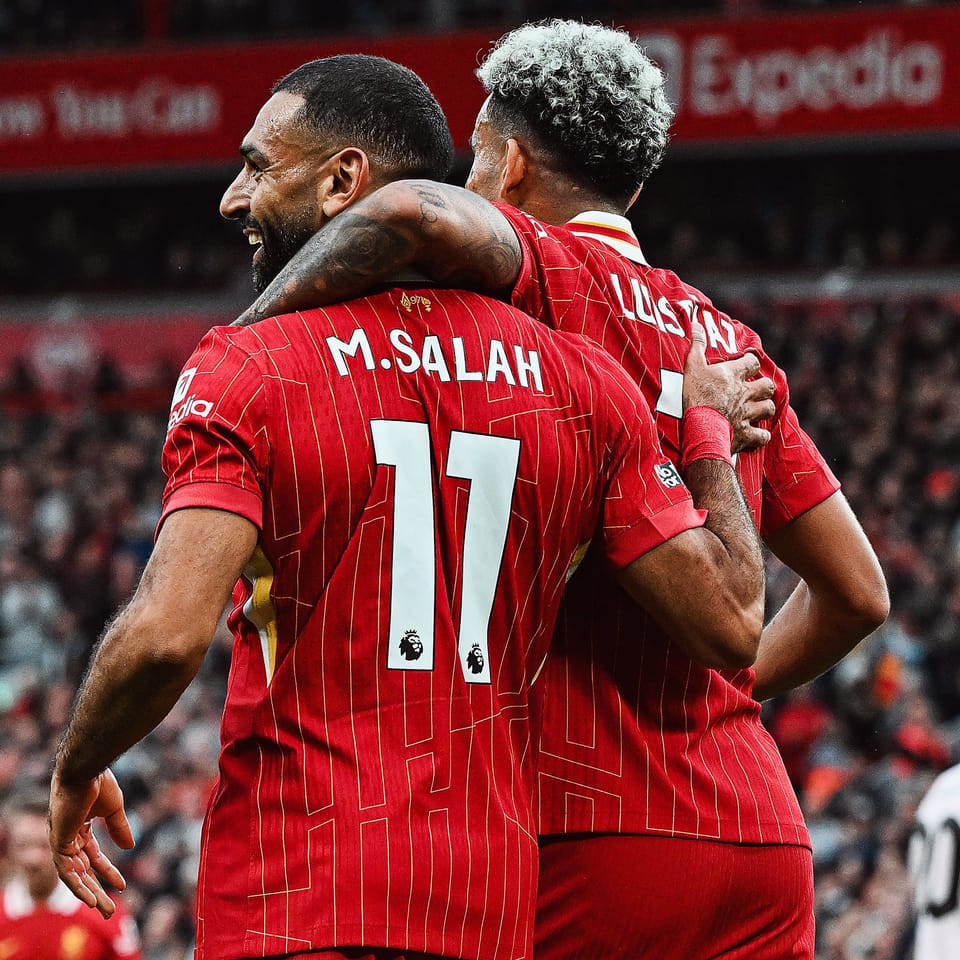Consolidating Aerials and The 'Aerial Duel' Stat in Football
In football, the battle for aerial dominance extends beyond the ball's arrival.

A similar, longer version of this article was first published by the writer in August 2022.
In football, the battle for aerial dominance extends beyond the ball's arrival. This analysis delves into the critical, yet frequently underestimated, pre-contact phase of aerial duels. It's in these moments that strategic positioning, anticipation, and subtle nudges play a pivotal role in determining the victor.
Key scenarios to consider include:
- Victory Before Arrival: Often, the outcome of an aerial is decided even before the ball makes its descent, through superior positioning or anticipation.
- Wrestling: In some cases, a player can gain control of the ball without even leaving the ground, by adeptly pinning or nudging their opponent.
- Beyond First Contact: The player who makes first contact with the ball doesn’t always dominate or control the subsequent play. (To be evaluated in subsequent editions)
I have it covered in my piece, but…
— Joel A. A. (@joeladejola) December 21, 2023
… there’s a common theme across Rasmus’s hold-up play struggles (see gif).
Anyone want to have a stab at a it? pic.twitter.com/KIxGJHmeWc
This re-assessment is crucial, particularly considering that many (public) second-order metrics in football analytics are built upon this foundational measurement.
Definitions
Before we get stuck in, let’s find out the definition of some key terms.
- An Aerial Challenge or Duel according to Opta,
This is where two players challenge in the air against each other. The player that wins the ball is deemed to have won the duel. When more than two players are involved the player closest to the duel winner is given an Aerial Duel lost.
'Challenge in the air' means that we only tally situations where both players jump for the ball. Thus, the three situation we described in the first section leak into other metrics.
I found these to be unsatisfactory so coined up and defined a new term: Contested Aerial Opportunity.
- A Contested Aerial Opportunity according to me,
This refers to any situation where two players are in contact (or close proximity of each other) while competing for an air ball.
I use the term opportunity because neither player has to leave the ground to duel, so it only makes sense that we reconcile when scoring the situation.
The player who makes the first contact with the ball, with whichever part of their body, ‘wins’ the contested aerial opportunity and vice versa.
The reference points for this stat are the ball and the proximity of the players from each other –not whether to not the players jump for the ball– as is the case with ‘aerial duels‘ from Opta’s definition.
Another clarification:
I differentiated these because not all aerial balls are duelled for in the air. In many situations, players engage with the aerial balls without jumping to compete in the air with their opponent –which Opta’s definition doesn't account for.
For clarity sake, here is what an Uncontested Aerial Opportunity looks like, using an example from the Brighton game. There will be several examples of Contested Aerial Opportunities as you read on.

Case-study: L. Martinez's aerials during Manchester United vs Brighton (7th Aug. 2022) season opener.
First Half
2nd Minute
Robert Sanchez plays a long ball in the path of Lisandro and Danny Welbeck, and they ‘contest’ for the ball–with each other trying to outmuscle the other and get into the best position.

Welbeck eventually gets into a better position and tries to control the ball while holding Martinez aside.

The key thing here is that, although the two players competed for the long ball, with the Brighton Striker reaching the first ball, the situation does not count as an aerial duel (according to Opta’s definition).
But with my term ‘contested aerial opportunity’, this would count for Welbeck (contested aerial opportunity won) and against Lisandro (contested aerial opportunity lost).
In case you are wondering, the situation also does not count as a ground duel, according to Opta.
Because neither player was in possession of the ball, this situation does not count as a ground duel. So how does this enter the stat sheet? It will be a pass completed for Robert Sanchez since Welbeck made first contact, and nothing will be recorded against Lisandro Martinez. Assuming Martinez got the first ball, it would have been recorded as a recovery for him.
Here is how the rest of the entire sequence played out:

Welbeck’s control is slightly off, but he can apply immediate pressure after, causing Shaw to launch the ball and Brighton to retain possession in the middle third of the pitch.
Lisandro Martinez: 1 aerial opportunity contested, 0 contested aerial opportunities won.
17th Minute
In this situation, the Brighton defender heads a ball back into United’s half, and Lisandro and Welbeck prepare to attack the ball. Because they are both within proximity of the ball, this will be an aerial contest opportunity.

The ball bounces, and Welbeck leaps and gets first contact while Lisandro stays on the ground. Because the latter does not jump and compete in the air for the ball, the data sites do not count it as an ‘aerial duel.’

Welbeck keeps the ball alive, and once again, there is a second ball to be dealt with, which Fred comes out inferior in, and Brighton maintains possession in United’s defensive third.
See the full sequence below:

Lisandro Martinez: 2 aerial opportunities contested, 0 contested aerial opportunities won.
22nd Minute
Once again, Robert Sanchez directs his long ball to United’s left side, and Martinez and Welbeck are close to each other, with the opportunity to contest for the ball.

Here is another angle just before the ball arrives. Both players have their eyes on the ball and are in contesting position.

Welbeck can pin Martinez down and lay the ball off to his teammate Lallana who then propels the attack in United’s defensive third;vBrighton gains territory in United’s half.

Here is how the rest of the entire sequence played out:

Despite Welbeck coming out best in the situation, this will not be recorded as an aerial duel won for him; in addition, it will not be recorded as a aerial duel lost for Lisandro because neither player went off the ground for the ball.
By my definitions though, this will count as an aerial opportunity contested, with Welbeck being the beneficiary of the ‘aerial opportunity won’ stat.
Lisandro Martinez: 3 aerial opportunities contested, 0 contested aerial opportunities won.
23rd Minute
Lisandro is marking Welbeck as the cross comes in.

Welbeck wins the first ball and directs the header towards goal but it ricocheted off Lisandro’s head and is redirected out of the box.

I do not know how this particular situation did not count as a *aerial duel* given the proximity and attempt to head the ball from both players; nevertheless, therein lies the discrepancy with that stat. This would have counted as a ‘blocked shot’ for Welbeck and and block for Lisandro–since he was not the last man….
Here is the full clip:

Lisandro Martinez: 4 aerial opportunities contested, 0 contested aerial opportunities won.
36th Minute
As the long aerial ball comes in, Martinez and Welbeck are within close proximity of each other. By my earlier definition, this counts as a contested aerial opportunity.

Lisandro wins the first ball while Welbeck spins behind, anticipating that the Argentine would try to stand up to him–as he did in the previous instances.

Here is a clip of the full sequence:

Lisandro Martinez: 5 aerial opportunities contested, 1 contested aerial opportunities won.
Second Half
During the second half of the game, Brighton became less direct and stopped launching the targeted balls to United’s left-hand side. By this time, they were already 2-0 up and could afford to retain and recycle possession when possible.
Conclusion
This brief walk-through of some situations Lisandro was put in this match highlights the deficiencies with the ‘Aerial Challenge’ stat. Like some others have echoed, the stat alone is not a good measure of a player’s aerial ability, and it is important to contextualise it. Because Lisandro could not compete with Welbeck in contested aerial opportunities, Brighton used that long ball to gain territory and pin United back throughout the first half.
Caveats of ‘Contested aerial opportunity’ stat
The key caveat for this stat is determining what proximity makes the situation ‘contested’.
Here is an instance from the 79th minute of that same game. I chose not to include it because I felt the ‘contested-nature’ of the situation was particularly subjective.

At no point during the flight of the ball did Lisandro make contact with Welbeck, so the English striker was able to receive and lay the ball off to his teammate.
Supplementary Review: Pour Toi
Would you tally the instance below as a contested or uncontested aerial opportunity?
Aerial contests are one of the few pre-determined negotiations on the pitch — ✌🏾players,☝🏾from either team.
— Joel A. A. (@joeladejola) December 27, 2023
Players who are reliable in them find opportunities to avoid the duel: save energy + reduce uncertainty.
🎞️: K. Mainoo wins this aerial contest without dueling. pic.twitter.com/VcDkWn1qwR
What Next?
If you enjoyed this, consider subscribing to BallerzBantz, following us on Twitter, and sharing this with someone. We're publishing one bite-sized analysis + solution daily. By subscribing, you will receive one synopsis each week.
Join us to stay ahead and contribute to this burgeoning community.
Who is the Writer?
Joel A. Adejola is an undergraduate at the University of Kansas (KU), studying Engineering and Philosophy.



